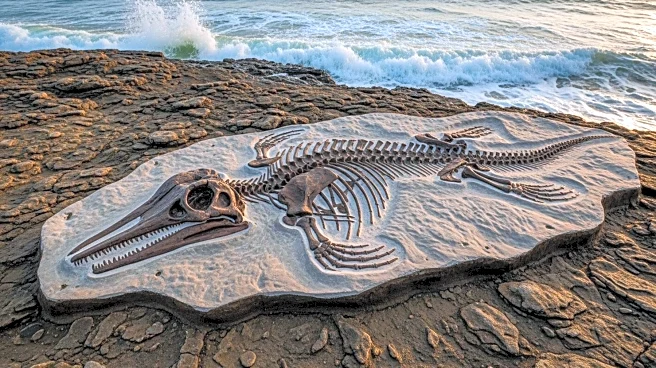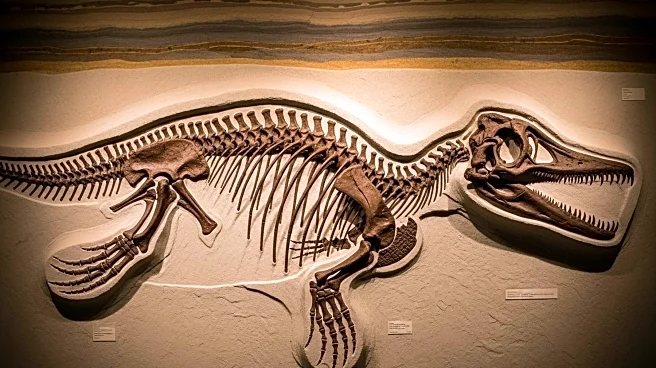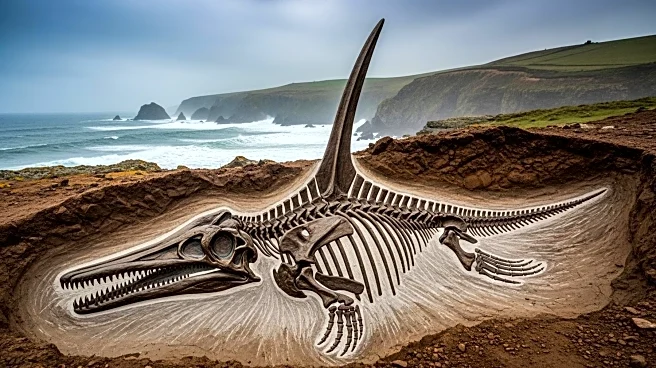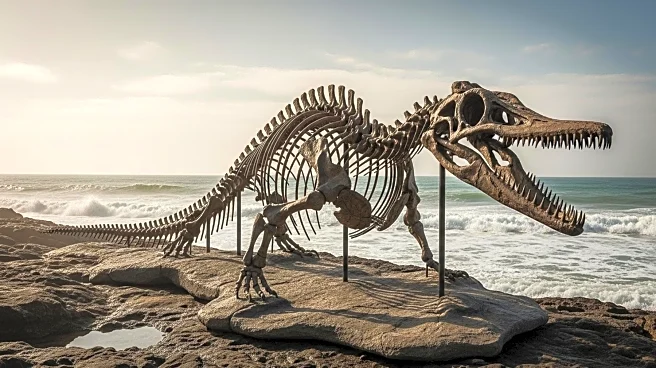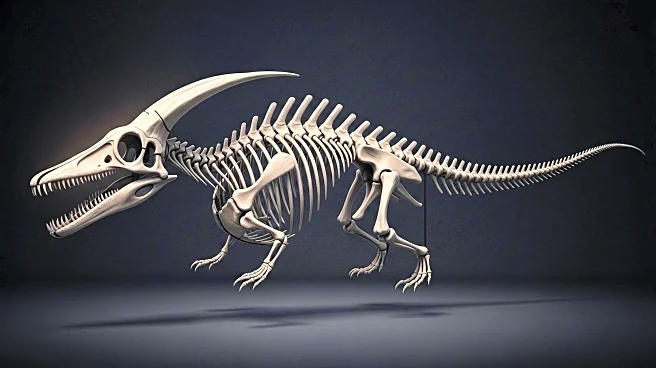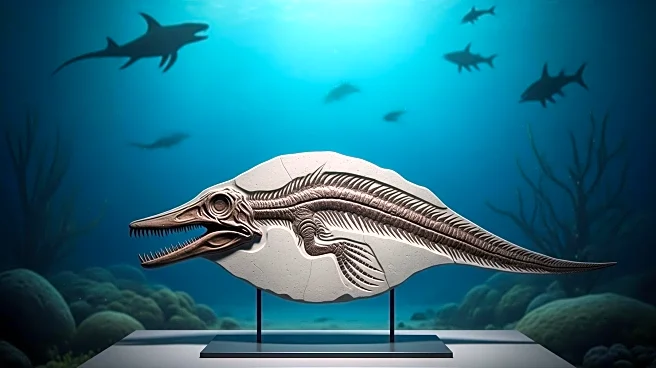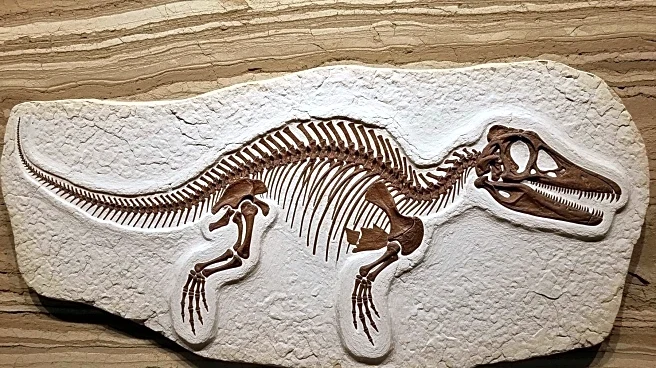What's Happening?
A fossil unearthed along the coast of England has been identified as a new species of ichthyosaur, named Xiphodracon goldencapensis, or the 'sword dragon of Dorset.' This discovery was made on the UK's Jurassic Coast and is considered one of the most complete fossils of its kind. The ichthyosaur, a marine reptile resembling a cross between a shark, barracuda, and swordfish, lived approximately 185 million years ago. The fossil shows signs of predation, with marks on its skull suggesting it was attacked by a larger predator. The identification of this new species fills a gap in the understanding of ichthyosaur evolution during the Jurassic Period.
Why It's Important?
The discovery of Xiphodracon goldencapensis is significant as it provides new insights into the evolution of ichthyosaurs, a group of marine reptiles that dominated the seas during the Jurassic Period. This finding helps scientists understand the diversity and adaptation of marine life in prehistoric oceans. The fossil's unique features, such as a prong-like nose and large eye sockets, suggest adaptations for hunting in dim conditions, which could inform studies on the ecological roles of ichthyosaurs. Additionally, the discovery highlights the rich paleontological history of the Jurassic Coast, contributing to the broader understanding of marine reptile evolution.
What's Next?
Further analysis of the Xiphodracon goldencapensis fossil may reveal more about its biology and ecological role. Researchers might conduct comparative studies with other ichthyosaur fossils to understand evolutionary trends and adaptations. The discovery could also lead to increased interest in the Jurassic Coast as a site for paleontological research, potentially uncovering more fossils that could provide additional insights into marine life during the Jurassic Period.
Beyond the Headlines
The identification of a new ichthyosaur species underscores the importance of fossil preservation and the role of museums in facilitating scientific discoveries. The fossil, initially found in 2001, was passed between museums before being analyzed, highlighting the collaborative efforts required in paleontological research. This discovery also raises questions about the interactions between different marine species during the Jurassic Period, offering a glimpse into the complex ecosystems of ancient oceans.

